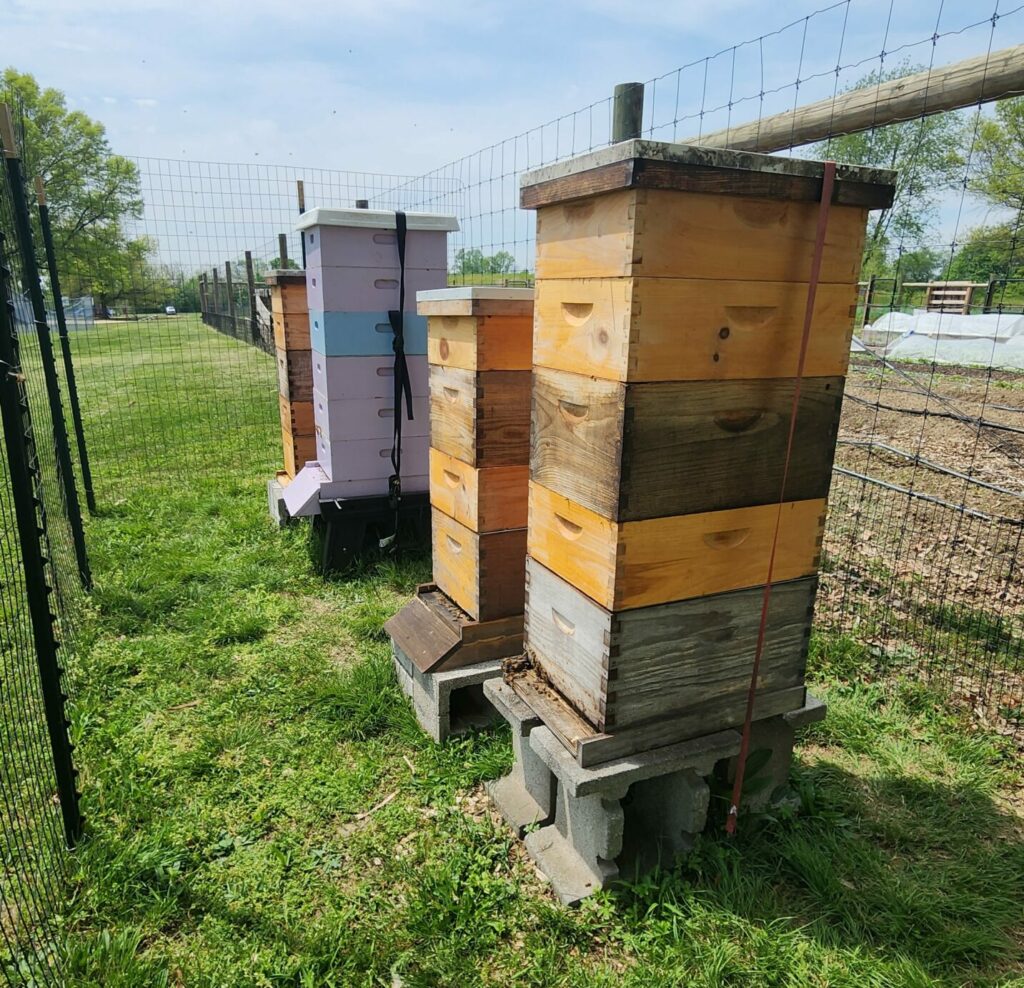
Spring is hitting early again this year, so we’re gearing up for our first batch of honey for 2024 to come off the hives in the next 2-3 weeks or so. The hives are growing taller every week, just like these hives at the Reservoir Park in Phoenixville. Over the winter, with the help of Trellis who manages the Community Garden in Phoenixville, we got a new fenced-in space together just behind the garden so the hives are in a sunny spot and away from the new walking path. I still have to get together my end of season wrap-up for the 2023 season, so hopefully I can get that done before the new honey starts pouring in off the hives! I’m also aiming to get a monthly update on the website here to keep things more current. I do more regular updates on Instagram, but not everyone does social media, so you can subscribe to the website updates here in the bar on the right side and get an email every time there’s a new post. Here’s to another sweet year!
2023 Season So Far
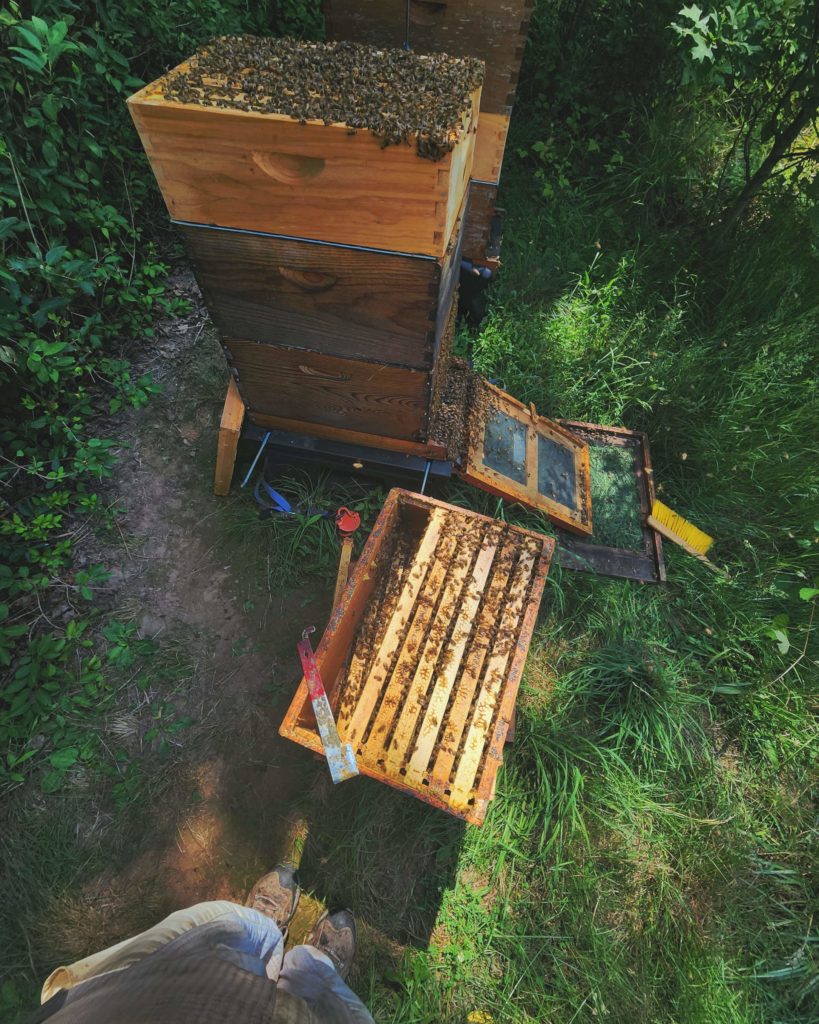
I realized I hadn’t posted an update in quite a while, but, I’m here now! This season has been a little bit of a roller-coaster. We started REMARKABLY early this year with our first honey coming off the hives on May 14th, a good 2-3 weeks earlier than years prior. This is now my 9th season of beekeeping and I can’t recall having honey available quite that early before. After a mild winter, the natural attrition of the hive population just didn’t dip as far as it usually does, so there were more bees to start the season off and boy were they ready when spring kicked off early. We had a very dry May but groundwater was still high enough to support the trees, so with a good Black Locust bloom and a lengthy stretch of honeysuckle bloom, the spring honey poured in off the hives nonstop. Now it’s August, and usually we see a nectar dearth in July and August, but so far, after 5 inches of rain in July and already over an inch for August (with lots more forecast for this week alone), so the honey just keeps coming in. More rain means more things bloom and for longer – I’ve even seen honeysuckle making quite a comeback this week. July and August so far have been slower on honey production than May and June, but definitely more than the slight trickle I’m used to seeing this time of year.
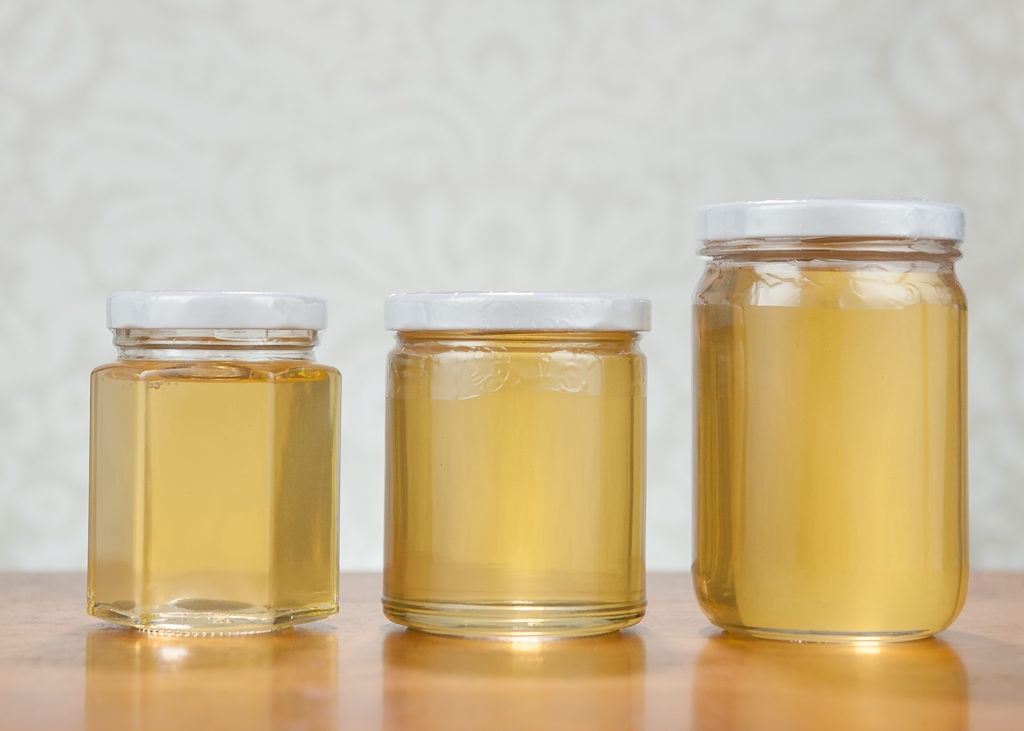
That spring honey is just absolutely gorgeous this year, by the way. Definitely give it a try if you haven’t had some before! I’m a little behind at updating the Honey Guide for this year, but we already tore through the whole alphabet once and have started running double letters if that’s any indication of how things are going! The guide is a great way to get more detail about your honey including tasting notes and possible sources. While I consider all of my honey “Wildflower honey” since I never get a true varietal, I at least take a guess on what the content is based on what was blooming. Occasionally a frame from May sticks around in the hive, half-capped, through September, so I’m not comfortable saying, “This is definitely all honeysuckle honey,” when it could contain honey from dozens upon dozens of different flowers throughout the season. Personally, I think it’s neat to have so many different floral sources combine to make a honey that will never, ever be made again because you can’t possibly capture that blend ever again. Our small batch processing, pulling honey about every week in roughly 5 gallon batches means each batch (indicated by a letter on the label) is truly unique. Visit us at a market and grab a jar for yourself!
2022 Complete Class Photo
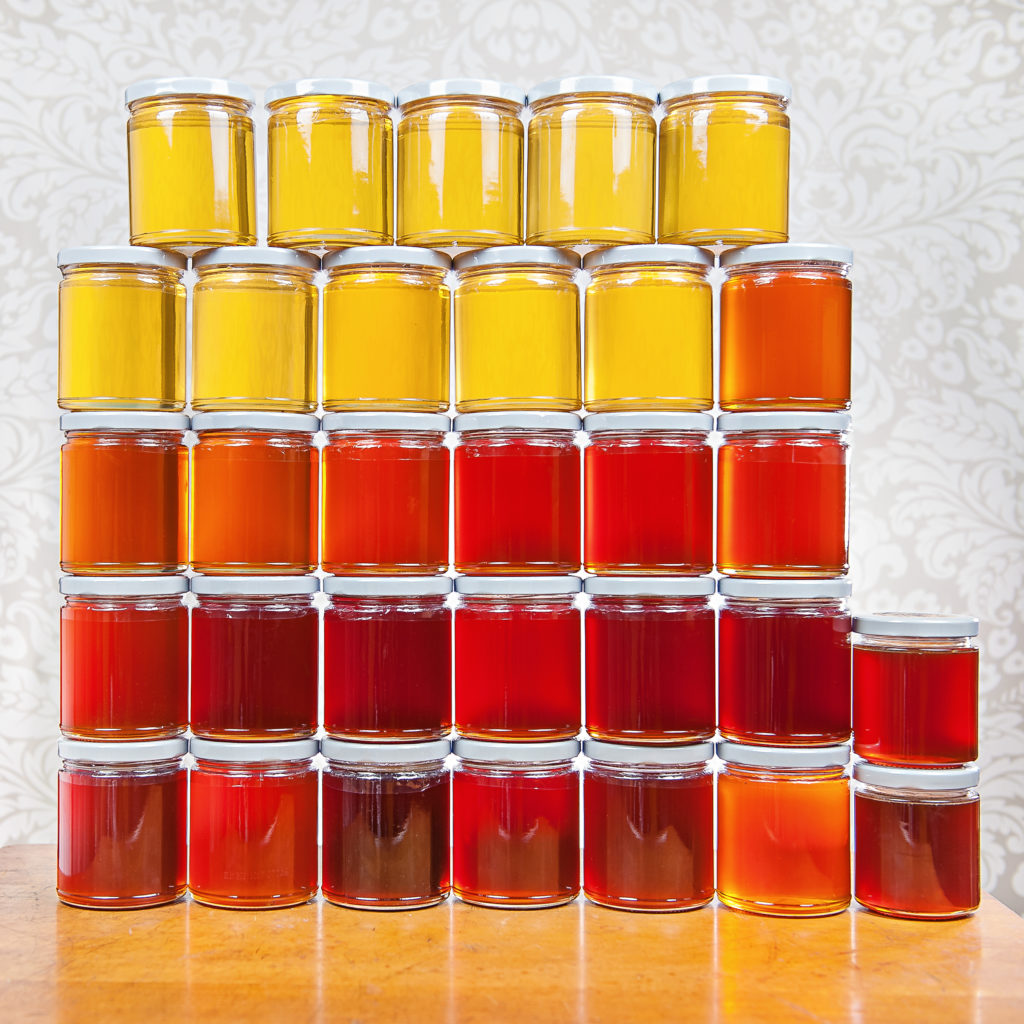
Our honey season is officially over and we’ve got the results of the whole year in one photo. We harvest honey on a weekly, running basis, so every week and location pretty much gets its own batch. A batch is usually somewhere between 30-70 lbs of honey, and I keep all the 4 locations separate from each other, so you can really see the tiny changes that happen location to location and week to week as different flowers are blooming. We’ve got a guide linked here that goes over when the honey came off the hives, from which apiary, and some basic tasting notes and possible floral sources. All of our honeys are pretty much wildflower honeys since we don’t move our hives for pollination services – the bees find what they find and I’ve got very little say in which flowers they visit. I usually have a good idea of what’s blooming when, so I can usually tell what the major floral source is, but the rest can be quite the toss up! In general the flavors run from a very mild, light, honey with delicate floral notes, to a classic wildflower/clover honey in the middle of the season, and then notes of molasses, maple syrup, and malt work in towards late summer and early fall.
In the photo above:
- Top Row: Batches A through E
- Row 2: Batches F through K
- Row 3: Batches L through Q
- Row 4: Batches R through W
- Bottom Row: Batches X – EE with BB and DD stacked on the side
We also had a few good batches of Spotted Lanternfly honey! What?! Yes. A destructive and invasive pest, the spotted lanternfly is a sap sucker. It filters out the amino acids from tree sap which means its waste product, called honeydew, is essentially sugar water (it’s complicated because it’s not really ‘waste’ as we think of waste – their ‘digestive’ system runs like a filter on a high pressure fire hose – they filter out the amino acids and let the sugar and water pass through at rates up to their whole body weight in one hour because of the high pressure of the sap in the tree [yep, more than you ever wanted to know about bug digestion!]). You’ll see a sticky residue underneath a tree infested with spotted lanternflies, and sometimes you can even see it raining under the tree. That’s all just sugar water, and of course Spotted Lanternfly infestations peak at their adult stage in the end of July, typically when we have a slow down or stoppage (dearth) in nectar production from flowers due to summer hot and dry weather. Naturally, the bees collect it and bring it home, turning it into honey just like they would with flower nectar. The resulting honey is dark, richly flavored with notes of molasses, malt, and maple syrup, and has a touch of a smoky note. It’s not everyone’s cup of tea, but I love pairing it with blue cheese or making a simple syrup (half honey, half water, leave it in the fridge overnight) for cocktails like an Old Fashioned. Throughout the world, honey bees get up to the same mischief with other sap sucking bugs’ honeydew, from aphids to scale insects and some moths and caterpillars as well, so this is nothing new!
What a year it’s been! I’ll have some end of year statistics coming up in the next post, including data on how many jar returns we’ve had over the year! Remember, you can always return your empty jar to be sanitized and used again. It’s exactly why we use glass – it’s nearly infinitely reusable, and the world doesn’t need more plastic.
2022 Class Photo – Year to Date
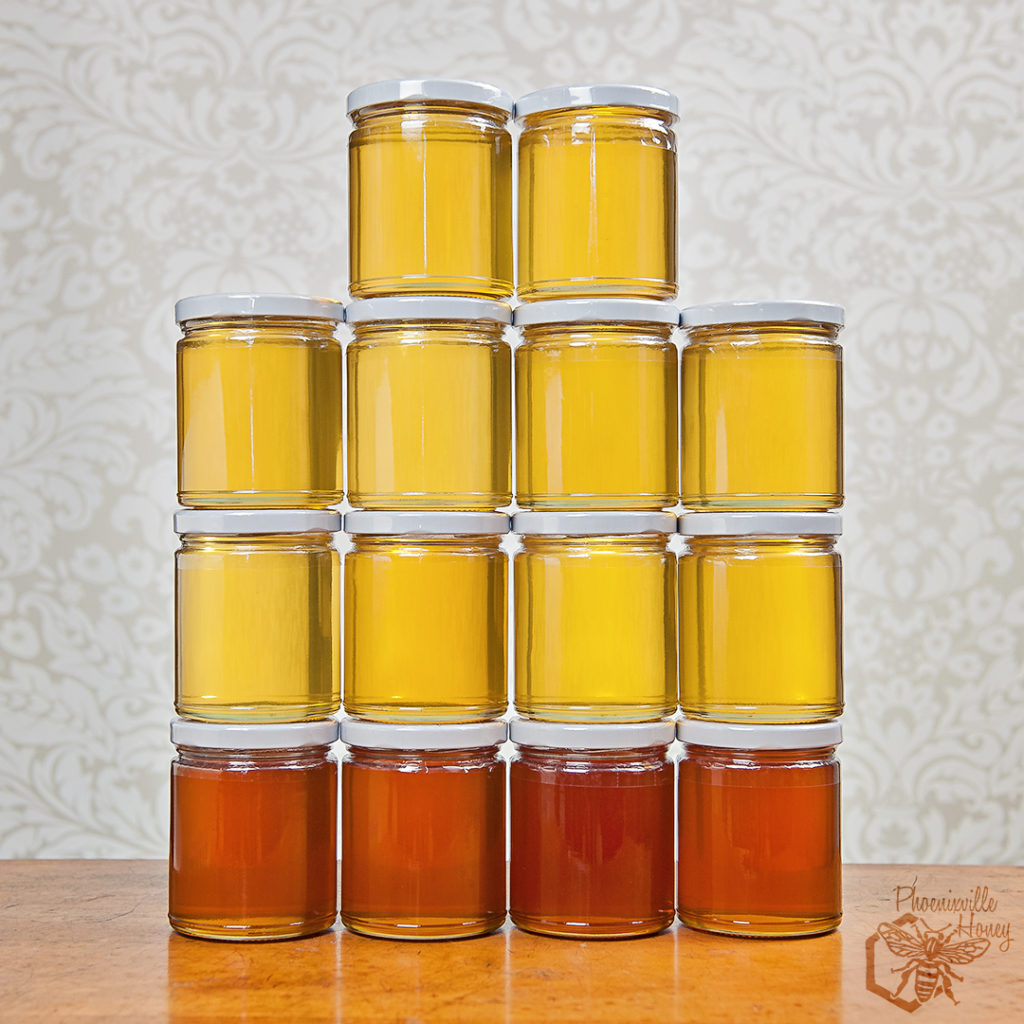
I love doing this in the beginning half of the year to see how the colors (and flavors) shift and change as time goes on. While there are very subtle color and flavor shifts in the early part of the season, it’s that dramatic jump from the pale yellow to a gorgeous mid-amber color that happens mid July, probably due to our last big tree bloom, the Sumac. Of course, there are a lot of other flower sources mixed in since our bees aren’t moved for pollination services, but one tree can hold thousands of flowers while one backyard garden with wildflowers might have a few hundred which is why trees make our biggest nectar producers. Don’t get me wrong, the flowers you plant to help bees absolutely help our native bees and honey bees as well and are 100% important! While an individual backyard of flowers might not be a major nectar producer, hundreds of backyards can combine to make an impact on honey production and supply pollen to raise the next generation of pollinators.
Now that we’re done processing through Batch N, we updated the honey guide (link here) which is now current through Batch N with photos. The batch letter on the lid of your jar will let you know when the honey was extracted, the location of the hives, and a few notes on the content and flavor. It’s also pretty fun to see the batches all lined up as the season goes on. I typically only bring 4-5 batches to a market, so if you have one you absolutely need to try, send me a message via the About Us page to let me know!
Pollinator Week 2022
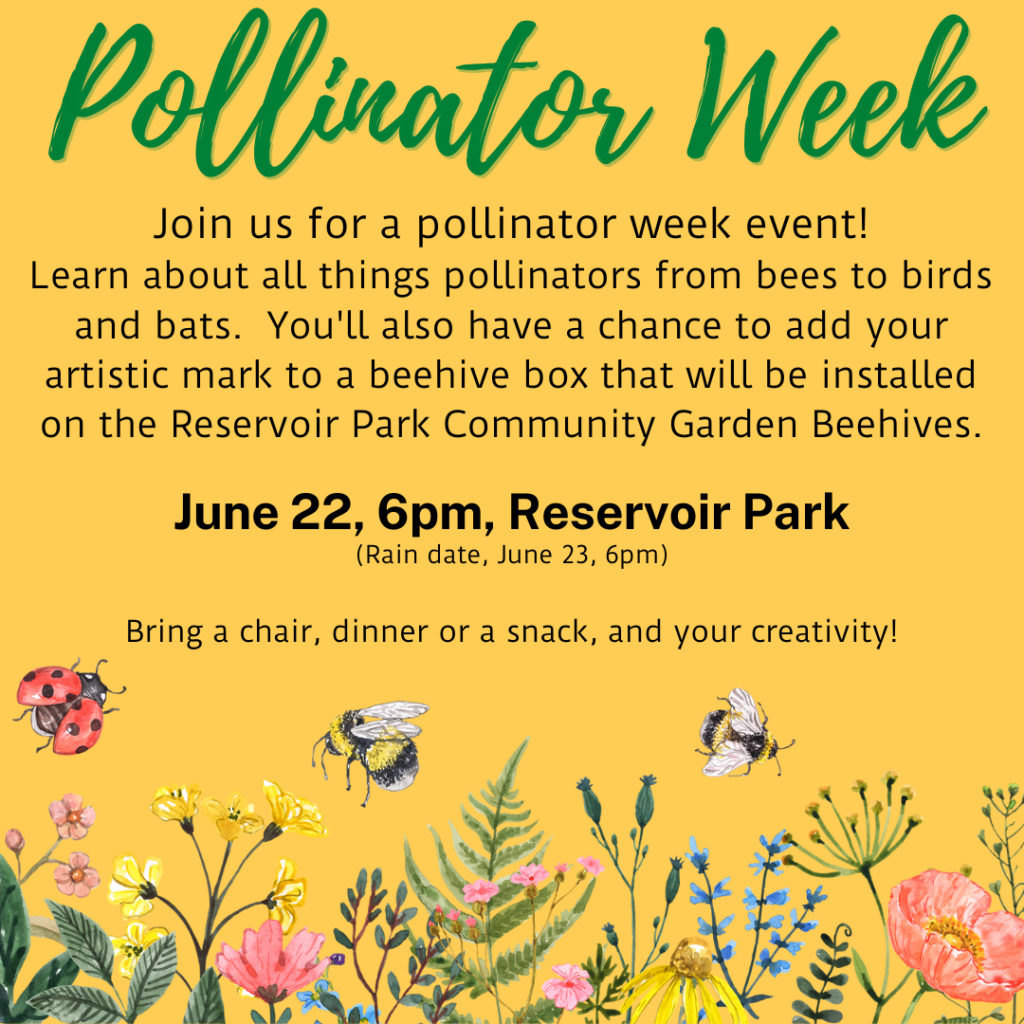
Join us on Wednesday, June 22, 2022 (rain date June 23rd) at 6pm at the Reservoir Park in Phoenixville for a fun pollinator week event! Combining all things Phoenixville, the event will feature a talk about pollinators while you enjoy a meal or snack, and we’ll even have an art activity to round out the Adult Summer Camp vibe.
Bring dinner or a snack – show off your cheese board skills or grab takeout from one of our fantastic local restaurants. Don’t forget the picnic blanket or folding chairs!
The art activity will involve making your artistic mark on a beehive box. We’ll have two freshly painted, plain white beehive boxes ready for you to paint, doodle or draw on, or even add a few lines of poetry to as a collaborative community art piece. We’ll have some art supplies available, but feel free to bring your favorite tools or mediums. The finished boxes will later be installed on the beehives at the community garden in the Reservoir Park.
Can’t wait to see you and celebrate the buzz about pollinators!
For more information about pollinators and other events, check out pollinator.org
Spring 2022
Long time, no blog! Well, we’re already jumped forward to spring of 2022! The bees are gearing up for summer, increasing their population size and they’re already starting to stack away some nectar which means they’re collecting more than they’re using to generate brood right now. We’re just about on the same track as last year in terms of weather, so we should have our first batches of honey available at the end of May or early June. The dandelions are popping up all over the place and the bees are enjoying some sunny days and warmer weather.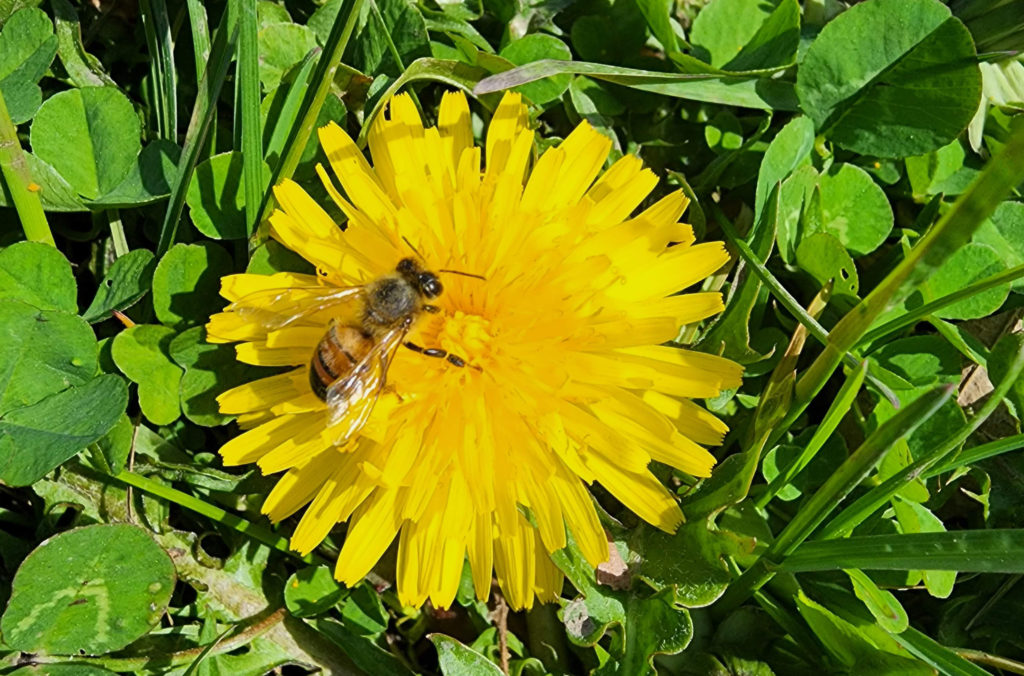
Just a short update to say hey, we’re still here, the bees are still buzzing and we should have honey within the month. Hope to see you out at a market soon!!
Summer State of The Hives
It’s been a year, hasn’t it?! I somehow simultaneously can’t believe it’s August already and yet also only August so far. Whew! The honey has been coming off the hives so fast this spring and early summer only to hit a dead stop for the last two or three weeks. The weather and amount of rain we get will heavily influence the amount of honey the bees produce, so since the last two years were incredibly rainy, the nectar flowed all throughout the summer. This year, there’s been less rain during July and August so far, so we’ve seen the usual late summer slow down. Hopefully things will pick back up for a good early Fall run as we start to prepare for the winter with mite treatments and supplemental feed to make sure they have enough food stored for the winter.
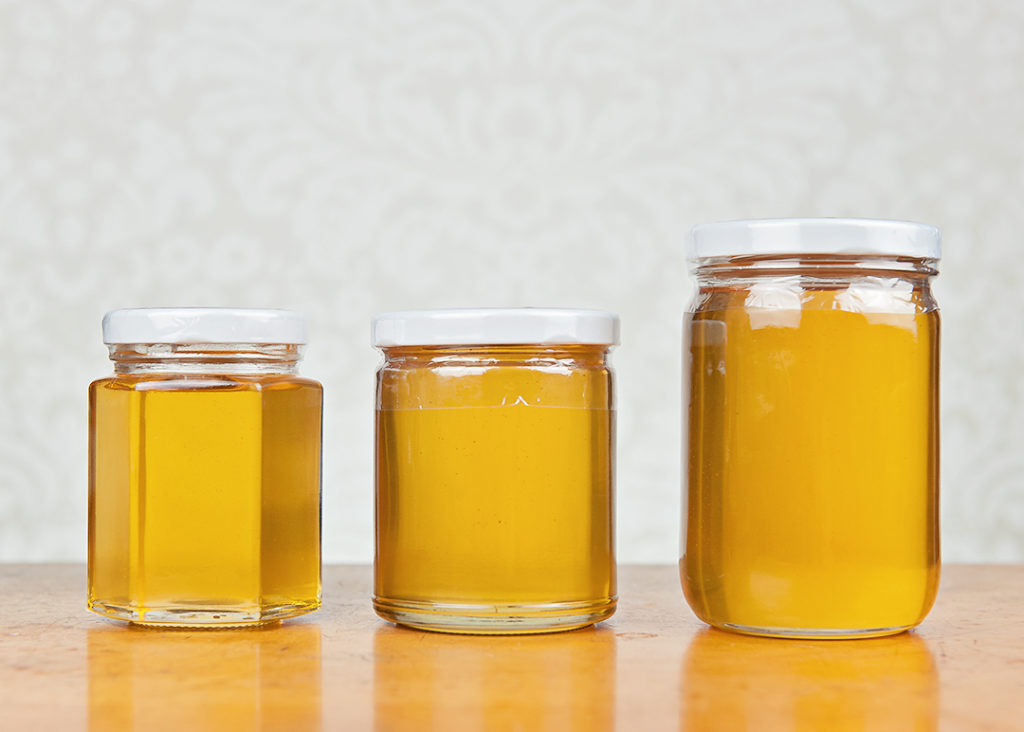
On the up side, the first trickles of that cult favorite, the darker honey, are starting to come off the hives. Clover is still kind of blooming in some spots where it’s shady, so there’s still a tiny bit of nectar coming in, but we haven’t hit the larger dark honey flow that I’m used to seeing this time of year. Fingers crossed we get some rain to finish out a strong season! We also added a honey guide (check it out in the menu up top) to go over all the batches we’ve extracted this year. Each batch is between 30-60 lbs and only from one location. Since we extract on a running weekly basis in ultra small batches instead of in larger runs maybe 2 or 3 times a year, the tiny changes as the bees collect from different floral sources are captured in different batches.
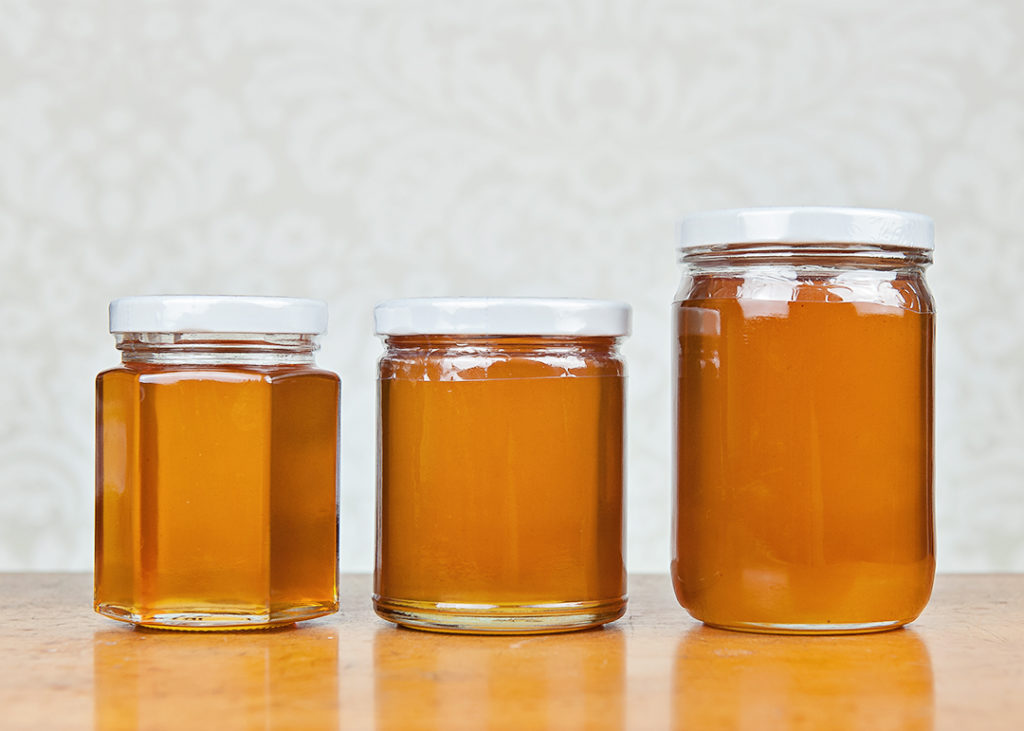
And in other news, we’re now PA Preferred! This certifies that our bees never leave the state of Pennsylvania or even Chester County. Some beekeepers send their bees out on a pollinator circuit to pollinate orange trees in Florida or cranberries in New Jersey, but our bees stay put on some truly beautiful properties in the Phoenixville area which makes the honey 100% collected and processed in Pennsylvania. The PA Preferred logo lets you know that you’re supporting a local Pennsylvania producer or farmer, and we’re thrilled to be in the company of such great fellow farmers and producers. Below is the “class photo” of our 2021 batches to date (minus batch A because it *evaporated* off the shelves). Left to right, top row, are batches B through E, and left to right, bottom row, are batches F through I. The bees have done a tremendous job this spring and I can’t believe how far ahead we are in comparison to last year with still a solid month or two left to go in the honey season!
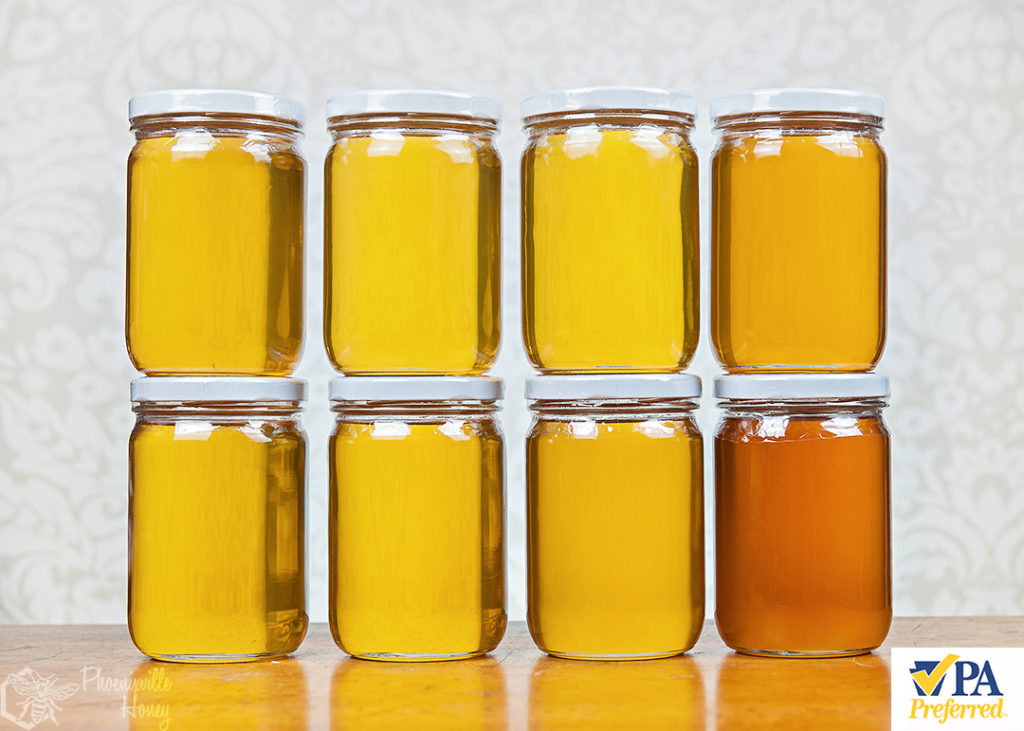
Spring 2021 Honey
This season felt like it would never get here after such a long Winter and now all of a sudden, BOOM, smack in the middle of a pretty incredible Spring honey season! Our first two batches are already off the hives, and number three is waiting for the extractor as I’m writing this. They’re that beautiful pale yellow honey that’s probably mostly from black locust trees. Our bees go wherever they please, so we don’t have a true varietal, but I can usually tell what the primary source is based on color and flavor and what was blooming a few weeks prior to pulling honey off the hives. The black locust blossom this year was a full week of sunshine, so the bees worked tremendously hard with no breaks for rainy days.
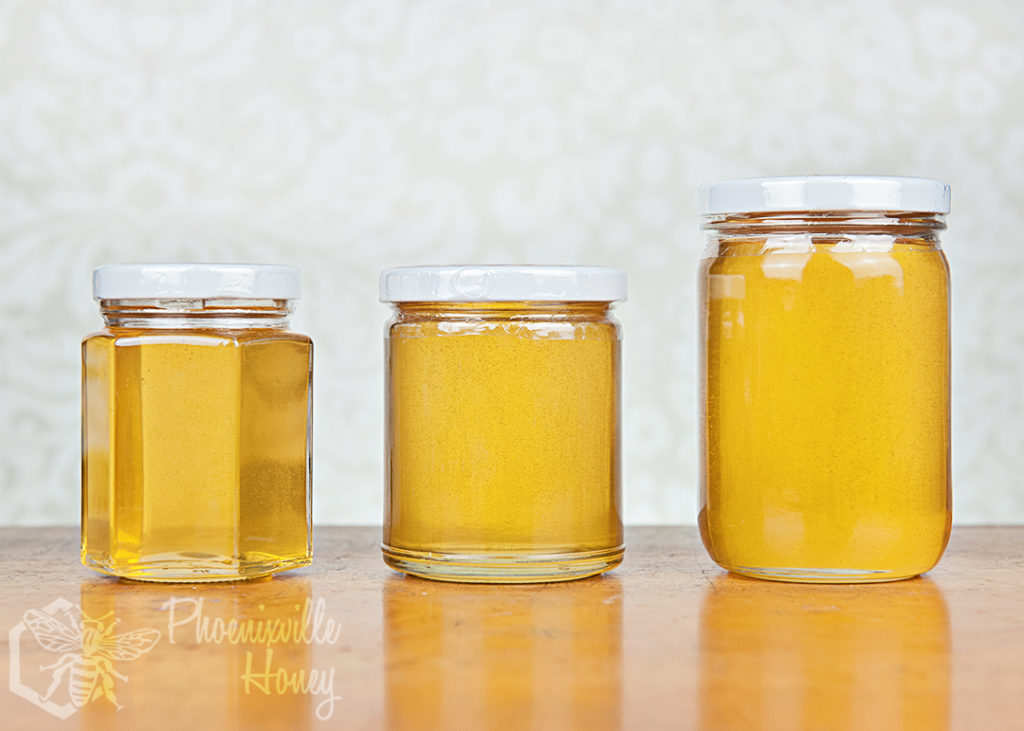
Can’t wait to work our way through the honey spectrum as it slowly shifts darker and darker as the season goes on. All the hives are happy and healthy and in fantastic moods (they tend to get a little feisty in July, but right now, they’re 50% sunshine and 50% rainbows and they’re an absolute joy to work with), and Spring has been rather kind to us, especially now that we had a good round of rain. More to come – hope to see you out at a market or as we drop off your order locally!
Summer Market Dates
What a season it’s been! We sold out of our own honey early in 2021 and have been carrying honey from a fellow local beekeeper friend so that we know we’re bringing you quality local honey from a reputable source. The support this past year from new and returning customers and friends sharing word about the business has been truly overwhelming. We’re grateful for each and every one of you, every second of bee-nerd chat at the stand, every comment and share on social media, and every purchase.
Our own honey production is slowly starting to swing into gear with the bees expanding the size of their colonies, flowers blooming, nectar sources waking up from a long winter sleep. Hopefully we’ll have our first round in early to mid June! It’s exciting, after such a long winter, to be here again, and we’re ready for it. Summer season market dates are posted up on the markets page, but here they are as well. Hope to see you out at a market soon to shop with so many amazing local producers!
- May 1 – Downingtown, 9a-12p / Pre-order & In-Person
- May 8 – Malvern, 9a-12p / Pre-order & In-Person
- May 12 – Devon, 11a-2p / Pre-order & In-Person
- May 13 – Eagleview, 3p-6p / Pre-order & In-Person
- May 29 – Downingtown, 9a-12p / Pre-order & In-Person
- June 9 – Devon, 11a-2p / Pre-order & In-Person
- June 10 – Eagleview, 3p-6p / Pre-order & In-Person
- June 12 – Malvern, 9a-12p / Pre-order & In-Person
- June 26 – Downingtown, 9a-12p / Pre-order & In-Person
- July 7 – Devon, 11a-2p / Pre-order & In-Person
- July 8 – Eagleview, 3p-6p / Pre-order & In-Person
- July 10 – Malvern, 9a-12p / Pre-order & In-Person
- July 24 – Downingtown, 9a-12p / Pre-order & In-Person
- July 31 – Malvern, 9a-12p / Pre-order & In-Person
- August 4 – Devon, 11a-2p / Pre-order & In-Person
- August 7 – Downingtown, 9a-12p / Pre-order & In-Person
- August 12 – Eagleview, 3p-6p / Pre-order & In-Person
- August 28 – Malvern, 9a-12p / Pre-order & In-Person
- September 1 – Devon, 11a-2p / Pre-order & In-Person
- September 4 – Downingtown, 9a-12p / Pre-order & In-Person
- September 16 – Eagleview, 3p-6p / Pre-order & In-Person
- September 25 – Malvern, 9a-12p / Pre-order & In-Person
- September 29 – Devon, 11a-2p / Pre-order & In-Person
- October 2 – Downingtown, 9a-12p / Pre-order & In-Person
- October 14 – Eagleview, 3p-6p / Pre-order & In-Person
- October 23 – Malvern, 9a-12p / Pre-order & In-Person
Winter Market Dates
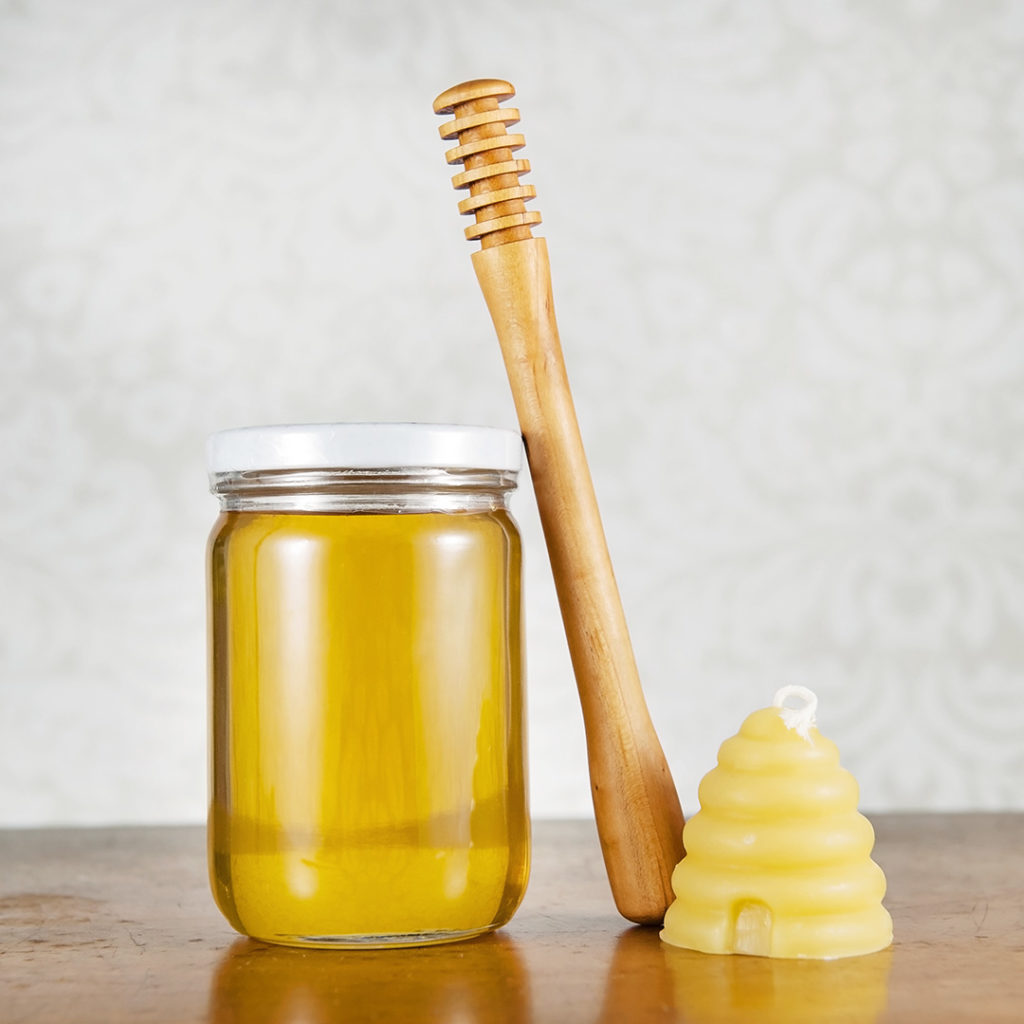
Hey folks! What a year it’s been. Our bees are all tucked in for winter after a series of treatments to prep them for winter health and survival, and we’re already dreaming of all the colors of Spring pollen they’ll be finding in just a few short months. We still have honey available for local delivery as well as pick-up and in-person shopping at local farmers markets. Honey dippers, beeswax candles, hand-printed tea towels are only available in our local delivery radius for now. We’ve updated all the upcoming market dates through March, and we’ll post them here too:
Upcoming Market Dates:
- Dec 19 – Malvern, 1-3p / Pre-order & In-Person
- Dec 22 – Eagleview Pop-Up, 11a-1p / Pre-order & In-Person (In the lot next to The Grove)
- Jan 7 – Eagleview, 11a-1p / Pre-order & In-Person
- Jan 9 – Downingtown, 10a-12p / Pre-order & In-Person
- Jan 16 – Malvern, 10a-12p / Pre-order & In-Person
- Feb 13 – Downingtown, 10a-12p / Pre-order & In-Person
- Feb 18 – Eagleview, 11a-1p / Pre-order & In-Person
- Feb 20 – Malvern, 10a-12p / Pre-order & In-Person
- Mar 13 – Downingtown, 10a-12p / Pre-order & In-Person
- Mar 18 – Eagleview, 11a-1p / Pre-order & In-Person
- Mar 20 – Malvern, 10a-12p / / Pre-order & In-Person
Have a safe and warm winter, and don’t forget honey for your tea and hot toddies!
